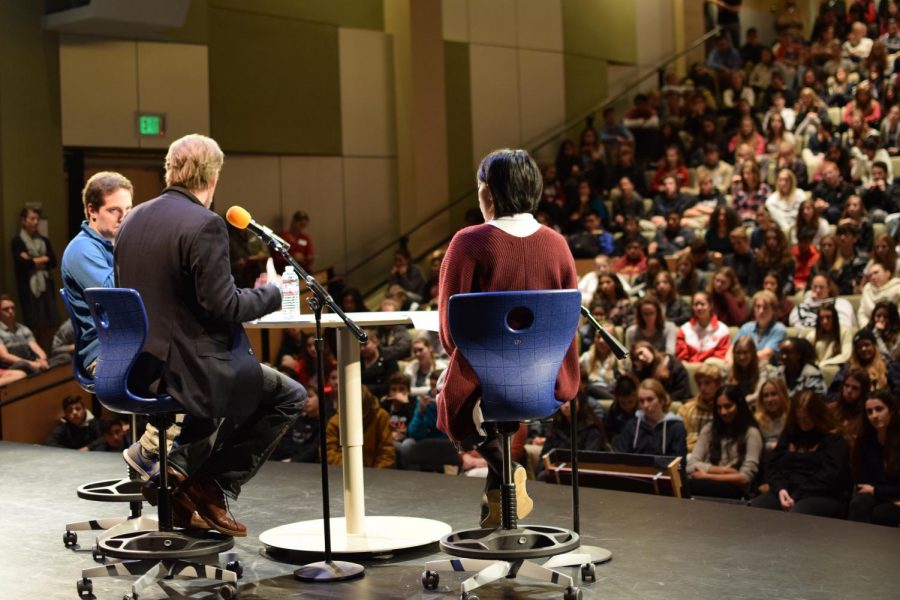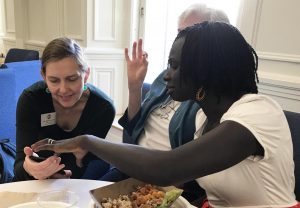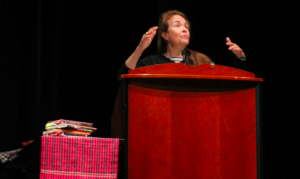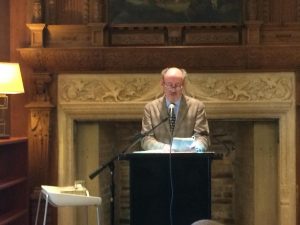George Saunders visits school community
George Saunders answers a question from Stuart Hall senior Seth Eislund. Saunders also read a passage from his story, “Victory Lap.”
November 16, 2017
WEB EXCLUSIVE Convent & Stuart Hall welcomed the 2017 Booker Man Prize winner George Saunders today for a special assembly and classroom visits.
Saunders discussed topics such as the impact of religion on his writing and his writing process, including his first novel,“Lincoln in the Bardo.”
“Hearing Mr. Saunders talk about his stories was really interesting,” junior Delaney Tobin said. “I learned that he really wants people to interpret his work for themselves, such as how he thinks of himself as a comical writer, but other people see him as more of a satirical writer.”
The assembly took a question and answer format with junior Sydney Caba and Stuart Hall senior Seth Eislund, followed by a short reading by Saunders.
“Saunders spoke about how in the process of writing, you have to be honest with yourself about the work,” Caba said. “He said the worst thing to do when you’re bored with a piece is deny. I think that’s good advice that I could incorporate into my own creative process.”
Saunders shared multiple stories about his life as a writer, as well as humorous anecdotes, according to Caba.
“He told us a story about a seemingly near death experience he had on a plane,” Caba said.“The detailing, the flow, it all felt less like a lesson and more like swapping stories with a friend over lunch. I just sort of marveled at the fact that after so many years of writing, he was such a compelling storyteller.”
Saunders also conducted a Q&A session with junior and senior English classes that included several faculty members and students with a free period.
While reading Saunders’s short stories, such as “Puppy” or “Victory Lap,” juniors analyzed his usage of different perspectives and their effects on their understanding of the stories.
“In ‘Victory Lap,’ my original intention was to write a sweet, innocent story of a young girl with no violence in it,” Saunders said. “It’s a gut feeling, and a lot of times the story will tell you that you need a second perspective.”
“Victory Lap” is told from three different perspectives and follows the story of a young girl whose “normal” afternoon takes an unexpected turn.
“I liked the message of ‘Victory Lap,’” Tobin said. “It showed a guy standing up for a girl who was in trouble. Instead of hiding away and being a bystander, he did something to help, which eventually changed her life.”
Saunders also offered advice to students on how to become better writers, according to Tobin.
“Saunders talked a lot about how being a good writer is being able to tear your work apart and go back and edit it instead of second-guessing yourself,” Tobin said. “People are allowed to interpret them whatever way they want, and he allows everyone to have different opinions.”













